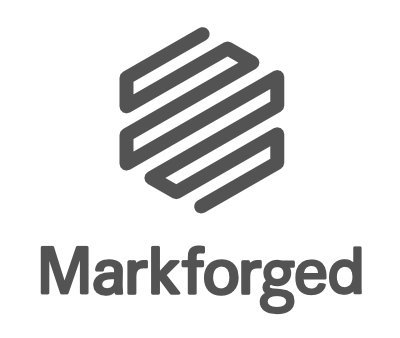The Markforged Story @ markforged.com
Markforged is transforming manufacturing by addressing 3D printing as a holistic problem. Our process innovations are only possible by a combined effort in advanced cloud computing, cutting-edge materials science, and industrial design. Over our five years of existence, we’ve consistently pushed the boundaries of additive manufacturing—3D printing with new materials, developing novel platforms, and constantly iterating on our technology and processes. Our vision is to increase manufacturing system efficiency through better and faster ways of making functional prototypes, tools and fixtures, and end use parts—at scale.
What's the result? An end-to-end 3D printing system that rivals traditional manufacturing processes, both in speed and cost, and expands the applications for additive manufacturing with purpose-built industrial technologies and a wide range of manufacturing-ready materials. Markforged is a manufacturer of industrial 3D printers, print systems, and software, as well as an innovator in the technologies and materials that continue to define this emerging industry.
Our Investors
Markforged investors include leading venture capital firms and industry leaders in technology, automation, and automotive.
Our Investors
Markforged investors include leading venture capital firms and industry leaders in technology, automation, and automotive.
Wärtsilä — a global leader in smart technologies and lifecycle solutions for the marine and energy markets — found themselves in a hard spot. They had been machining a lifting tool out of solid steel to move heavy engine parts in factories and on commercial ships to aid in the building and servicing of engines. However, engineers using the lifting tool complained about the immense weight of each tool, others found that it wasn’t easy to transport because of its size, and the cost and time to manufacture was far beyond what the company was willing to spend. They needed an in-house, cost-effective solution that could scale across multiple sites, with limited downtime.
3D printed lifting tool attached to piston @ markforged.com
The new design was split into multiple parts and reinforced with continuous carbon fiber
The team had already purchased a couple of Markforged carbon fiber printers, and had found uses for them building several other tools — from tool holders to measuring tools. However, they wanted access to a larger build plate using the same 3D printed filaments, so they turned to the Markforged Industrial Series X7 printer. Engineers at Wärtsilä worked alongside Markforged applications engineers to redesign their lifting tool with additive manufacturing in mind. They took the existing design, split it into a number of parts, and utilized the Markforged continuous carbon fiber material to reinforce the tool to give it added strength, yet make it lightweight.
Engineers at Wärtsilä gathered around the tool, which was set up to lift a piston as a test. What they didn’t expect, however, was that the lifting tool would lift the 240kg engine piston on the first try. “I think everybody was actually pretty shocked about the performance,” said Juho Raukola, Innovation Expert (Additive Manufacturing) at Wärtsilä. Since then, they have done numerous tests, and have found the tool can lift 960kg without deformation (in manufacturing situations, a safety factor of four needs to be recognized).
3D printed lifting tool created for Wärtsilä @ markforged.com
The original lifting tool was 75% heavier than the new 3D printed tool
Type Approval and CE-Certification
CE-Certification is a certificate a manufacturer affixes to their product after it is found to have met high safety, health, and environmental protection requirements. Bureau Veritas, an international certification agency headquartered in Paris, put Wärtsilä’s lifting tool through all the necessary tests and inspections before awarding it the Type Approval and CE-Certification, making Wärtsilä the creator of the world’s first 3D printed CE-certified lifting tool.
Distributed Manufacturing @ markforged.com
Wärtsilä has utilized additive manufacturing wherever they can, making everything from 3D printed metal grippers using their Metal X printer, all the way to various tools across their factories in Italy and Finland. Their next step? Distributed manufacturing using Markforged 3D printers. “The beauty of 3D printing is that each design can be printed anywhere at any time through distributed manufacturing,” said Juho. The team plans to have Markforged 3D printers in several of its facilities to 3D print the tools engineers need to keep things up and running in the energy and marine fields.
Want to read more? Check out the Wärtsilä case study!
Markforged 3D Printers and Software @ markforged.com
Markforged 3D printers, software, and materials are transforming manufacturing and changing the face of the 3D printing industry.
Carbon Fiber 3D Printers
Replace machined aluminum with carbon fiber. Stronger parts, 50x faster, and 20x less expensive — save time, money, and effort with Markforged composite 3D printers.
Metal 3D Printers @ markforged.com
Everything you need to go from design to fully functional metal parts in under 24 hours — the Metal X 3D printing system is an end-to-end manufacturing solution.

